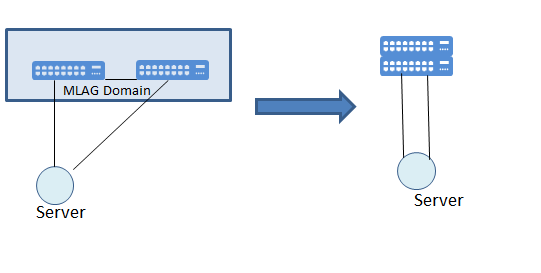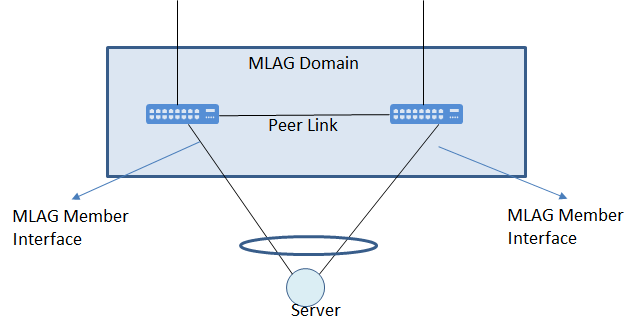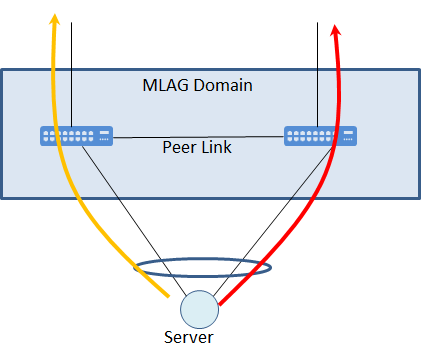In the new generation data center networking design, we have “clos” topologies which is based on network–based spine-and-leaf architecture. CLOS topology basically have 2 tier, Spine (Core) and Leaf (Access). Every leaf switch is connected to all Spine switches. The spine layer is the backbone of the network and is responsible for interconnecting all leaf switches.
MLAG can be used at various places in the network to eliminate bottlenecks and provide resiliency, including the spine layer and leaf layer. But the most common use case for M-LAG is using this feature at the Leaf layer. At the leaf of the network, servers with multiple interfaces connect to the switches using NIC bonding, or standard Link Aggregation. With two of your leaf switches in an MLAG pair, you can now have active/active redundant connections from the server to the switches.

The LAG groups can be formed using static link aggregation or LACP based negotiation methods. Note that without M-LAG half of the Layer 2 uplinks to the switch would be in blocking state and basically we couldn’t use all the links. One of the major advantage of M-LAG is providing active-active redundancy.
With the M-LAG feature, we will have logically one switch instead of two. And we will be working like we have standard link aggregation between our server and logically one switch.

The important component of M-LAG technology is peer-link between 2 M-LAG end point. It is used to exchange negotiation packets and transmit part of traffic. Best practice may be using multiple peer links with link aggregation to provide extra reliability.

M-LAG negotiation packets are sent over peer link and determines the master and slave M-LAG peer. From the traffic forwarding perspective, master and slave state is not important, both of the peer will go on to forward any traffic. It will depend on how server are sending the traffic. If server uses both of the link, both the master and slave will forward the traffic. The other duty of peer link exchanging traffic state information like MAC address entries or ARP entries.

Every link in M-LAG domain is in up state. All traffic will be forwarded by all members of M-LAG domain. According to topology, yellow and red traffic are successfully forwarded. Uplink interface of the both members are also used as a hear-beat between 2 endpoints.